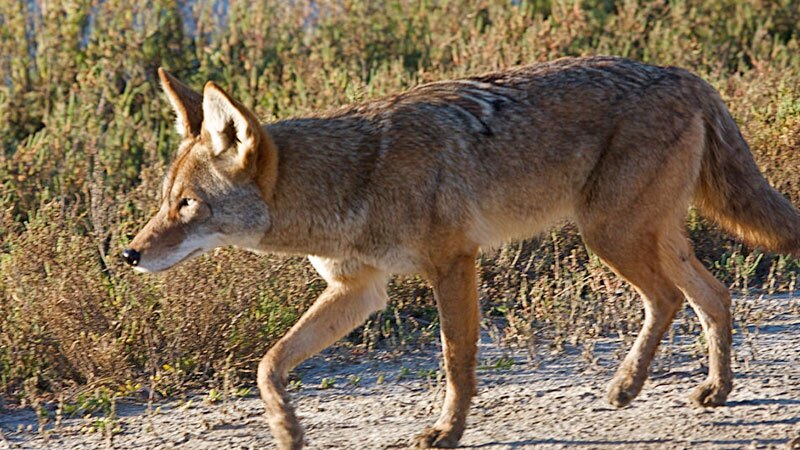Arcadia May Begin Killing Coyotes

Earlier this month, the City of Arcadia approved a lethal management solution for their urban coyotes with a price tag of some $20 thousand. That's a reversal of a coyote management plan adopted by the city in 2011, which was founded on coexistence with the wild predators.
Coyotes have long made homes for themselves in Southern California and within our cities, and they form an important part of our wildlife communities. Because the majority of their diet comes from rabbits, mice, rats, gophers and other small critters, they help control populations of small mammals – at least in some of the more natural parts of our landscape. In cities, they rely more heavily on our leftovers, which they can too easily access in our trash, along with fallen fruit lying in our yards.
Historically depicted by Native American culture as a clever trickster, the coyote is one of the most adaptive mammals around – perhaps second only to our species. They can eat both plants and animals, they can live alone or in a pack, and they can be active during the day or at night.
While she acknowledges that "any city that tr[ies] to cull their population is fighting an uphill battle," Niamh Quinn, human-wildlife advisor for the University of California Cooperative Extension, doesn't rule out the utility of the selective removal of so-called problem animals either. (Though that pre-supposes that animals that get themselves trapped are themselves the problem animals, a dubious assumption.)
"The idea behind coyote removal is not population reduction," she says.
For one thing, it simply won't work – something on which wildlife advocacy groups like Project Coyote concur. If a breeding female is removed then other females in her pack will become reproductively available, and will quickly replace her. Or so-called transient coyotes, loners who don't have an established pack and territory, could move in and take advantage of the power vacuum left by the removal of a dominant individual. Coyotes are the only carnivores that have managed to double their range in North America, even while subject to intense persecution and hunting.
In general, animals do a fairly decent job of staying out of our way in the big city. Our Griffith Park-dwelling mountain lion, without question the more imposing of our native predators, has only rarely gotten himself into trouble. Indeed, it is usually we who get in the way of wildlife, what with our fast cars and our proclivity for spreading rat poison throughout our neighborhoods.
If P22, the Griffith Park puma, embodies the reclusive, shy, unaffected LA celebrity forever avoiding the limelight, our coyotes are selfie-obsessed fameballs. They're bolder, less cautious, more aggressive than their feline neighbors.
The idea behind lethal management is that those coyotes who come in and replace those who have been removed will keep their distance from humans, as well they should.
Other coyotes in other cities seem to get this. Coyotes have made a home for themselves in Chicago, for example, and they don't appear to be getting into much trouble. The same goes for those living up north, in and around the Bay Area. "We are definitely experiencing very high levels of conflict in Southern California," Quinn says, compared to other areas.
"We've had four bites on humans this year in LA and Orange [counties]," says Quinn. "We've had bites in Montebello, Pico, Hacienda Heights, Rowland Heights, Diamondbar, Los Angeles, Commerce, Pomona. Last year we had bites in January all the way into December, and it kicked off again in January." She recalls that in 2015, thirteen bites were recorded in Elysian Park alone. And while some are certainly the result of human error, and others may be the result of humans (and their pets) getting uncomfortably close to dens, many negative interactions seem to defy explanation.
If there is something different about our Southern California coyotes it isn't clear what it is, and that reflects a lack of scientific engagement with the question. "We don't know where they are, we don't know how they're using the space, we don't know what leads to conflict, we don't know how they react to hazing, we don't even know why people react the way they do to coyotes." We also don't know how effective public education interventions are as compared to hazing or lethal control.
Santa Monica Mountains National Recreation Area biologists are currently trying to address several of these questions through their coyote scat project, though more work is clearly needed.
In the meantime, the City of Arcadia appears to be moving forward with the lethal management plan. Project Coyote has announced plans to speak in favor of continuing with the education-based plan at an upcoming city council meeting.
For the record: this article has been corrected. An earlier version of the piece falsely said Arcadia's coyote program's price tag would be $20 million. The actual budget for the program is $20 thousand. We regret the error.


